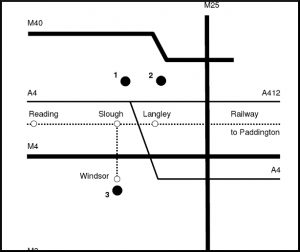11 May 2018
Picture this! Making images accessible
Have you ever thought about how blind and partially sighted people access images?
When clients send us documents to transcribe, they often assume we simply omit images. But it’s actually a bit more complicated than that…
Making images accessible
When we transcribe a document into an accessible format, we strive to create equal access to information. As such, when we come across an image we ask ourselves what the author of the document was trying to communicate to their intended audience when they included this image in the text. We ask ourselves – does this image add information to the text? And if so, we try to replicate this information via a description. If not, we may simply indicate to the reader that an image exists in the print version, or choose to omit it entirely.
So sometimes the image or photo might be an integral part of the document. For example, in our academic transcriptions for universities and colleges, we often transcribe complex scientific diagrams or photos of pieces of art, such as sculptures or paintings. In these situations we spend a great deal of effort in describing this information in detail, so the visually impaired reader has equal access to all the semantic content of the document. In documents relating to health, we get our descriptions verified by the client to ensure we have provided accurate information for the reader.
Other times, perhaps the image is simply to break up the text or for aesthetics, in which case we would usually omit it. Of course we can also provide tactile diagrams to complement any other format such as Braille, Audio, Large Print or e-text. Tactile diagrams translate a visual image into a tactile one by using raised surfaces so blind and partially sighted people can feel them. These are particularly helpful for maps.
So when you next send us a document for transcription, think about the images you have included. Is there a particular image that you think is important to describe in detail for visually impaired readers? Would you like to proof this description before we go ahead and transcribe it? Is there a particular aspect of the image you would like us to focus on? Would your end-user find a tactile diagram easier to use?
Making information accessible is what we love to do and we have trained and experienced staff who can accurately describe your images in detail.
Get in touch if you have any questions or want to place an order.

